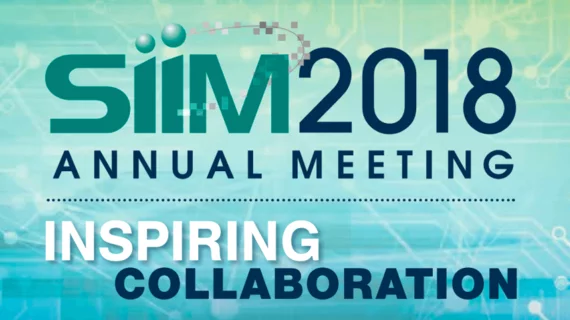How NYU’s radiology department leverages data to optimize patient care
When Michael Recht, MD, started as chairman of the department of radiology at NYU Langone Medical Center, he had a conversation with a superior who recalled how seemingly easy things were for a radiology department in the early 2000s—but times have changed.
It’s much harder to succeed, he said, because imaging professionals are being asked to do more with less.
“We really have to understand how our imaging department works and make sure we operate effectively and efficiently,” Recht said during a session at the Society for Imaging Informatics in Medicine (SIIM) 2018 annual meeting. “I believe the only way to do that is to collect data and act on it.”
Collecting data is only half the battle. He also argued that systems need to change and adapt to what that data says. Those that don’t may fall victim to what he presented as the ‘hippo syndrome’—listening only to the highest paid person’s opinion.
The rules of data
Recht offered a few pointers to make sure organizations are not just collecting data for the sake of amassing it. Data needs to be accurate.
“The worst thing I’ve had to deal with is when you start making decisions and realize that the data is dirty—there’s nothing worse than meeting with people and saying this is all based on the wrong data,” he said.
Not all departments want the same kind of data. At NYU Langone metrics and real-time information are available for specific departments with data relevant to their patients. It also need to eb actionable.
“We need to have the data and put it into the hands of people making the decisions,” Recht said.
Prior to the system Recht manages today, he would ask his informatics team for specific data to help answer a question. At times, it would take five weeks to generate a report. “By the time they gave me the data, I had forgotten what I was using the data for.”
The proof is in the pudding
At NYU, Recht and his team have created customizable data dashboards for leadership, administration, technologists, billing departments and marketing personnel which has improved patient care and created savings.
A few years ago, Recht undertook an MR engineering project after the health system had a backlog of inpatients and pediatric anesthesia patients waiting a minimum of 40 days to schedule an appointment.
After talking with MR technologists, Recht and his team found the time slots for appointments were being disregarded. Patients were being sent to any institution with a free magnet, with little understanding of the consequences for patients down the line.
The informatics team created an MR dashboard with widgets that contained data on each patient and a color-coded system to determine every step of the patient journey—from the time they arrived through procedure completion.
Because of what they found, slots for pediatric patients were opened each morning and on Saturdays, along with a host of other improvements. They now complete more than 200 MRIs every weekend, Recht said. They’ve increased the number of techs per magnet and save an average of five minutes per scan which has allowed for two more cases per day on each magnet.
From 2013-17, their main campus MR outpatient center experienced a 59 percent jump in growth, he said.
He remembered one tech who was initially hesitant to the sweeping changes, but who then became a different person after the process improvements were in place.
“For the first time I actually have control of my day and I can understand what’s going on for the rest of the day,” Recht said.

